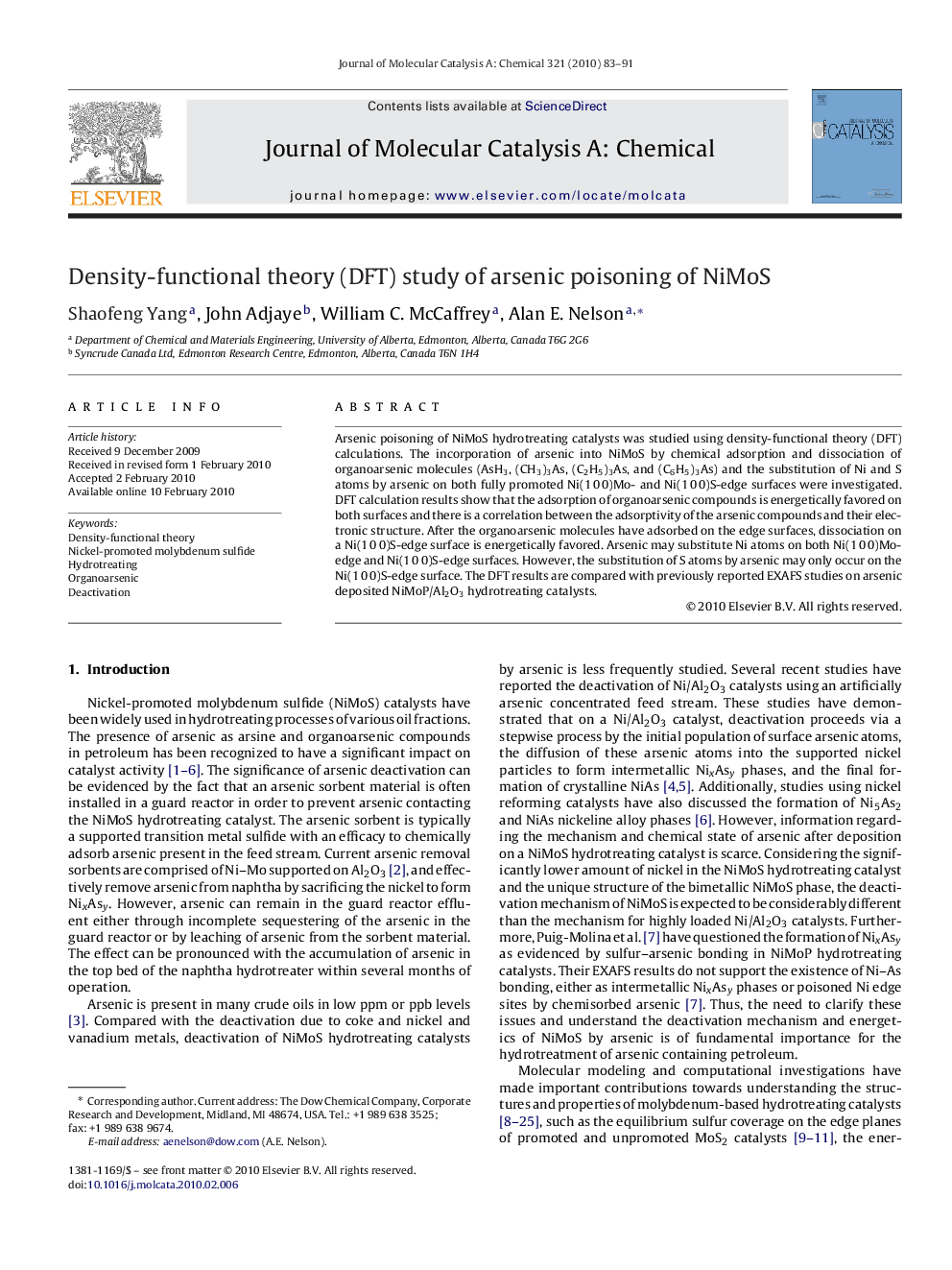| Article ID | Journal | Published Year | Pages | File Type |
|---|---|---|---|---|
| 66791 | Journal of Molecular Catalysis A: Chemical | 2010 | 9 Pages |
Arsenic poisoning of NiMoS hydrotreating catalysts was studied using density-functional theory (DFT) calculations. The incorporation of arsenic into NiMoS by chemical adsorption and dissociation of organoarsenic molecules (AsH3, (CH3)3As, (C2H5)3As, and (C6H5)3As) and the substitution of Ni and S atoms by arsenic on both fully promoted Ni(1 0 0)Mo- and Ni(1 0 0)S-edge surfaces were investigated. DFT calculation results show that the adsorption of organoarsenic compounds is energetically favored on both surfaces and there is a correlation between the adsorptivity of the arsenic compounds and their electronic structure. After the organoarsenic molecules have adsorbed on the edge surfaces, dissociation on a Ni(1 0 0)S-edge surface is energetically favored. Arsenic may substitute Ni atoms on both Ni(1 0 0)Mo-edge and Ni(1 0 0)S-edge surfaces. However, the substitution of S atoms by arsenic may only occur on the Ni(1 0 0)S-edge surface. The DFT results are compared with previously reported EXAFS studies on arsenic deposited NiMoP/Al2O3 hydrotreating catalysts.
Graphical abstractArsenic poisoning of NiMoS hydrotreating catalysts was studied using density-functional theory (DFT) calculations. The adsorption of organoarsenic compounds is energetically favored on both Ni(1 0 0)Mo- and Ni(1 0 0)S-edge surfaces and there is a correlation between the adsorptivity of the arsenic compounds and their electronic structure.Figure optionsDownload full-size imageDownload high-quality image (119 K)Download as PowerPoint slide
